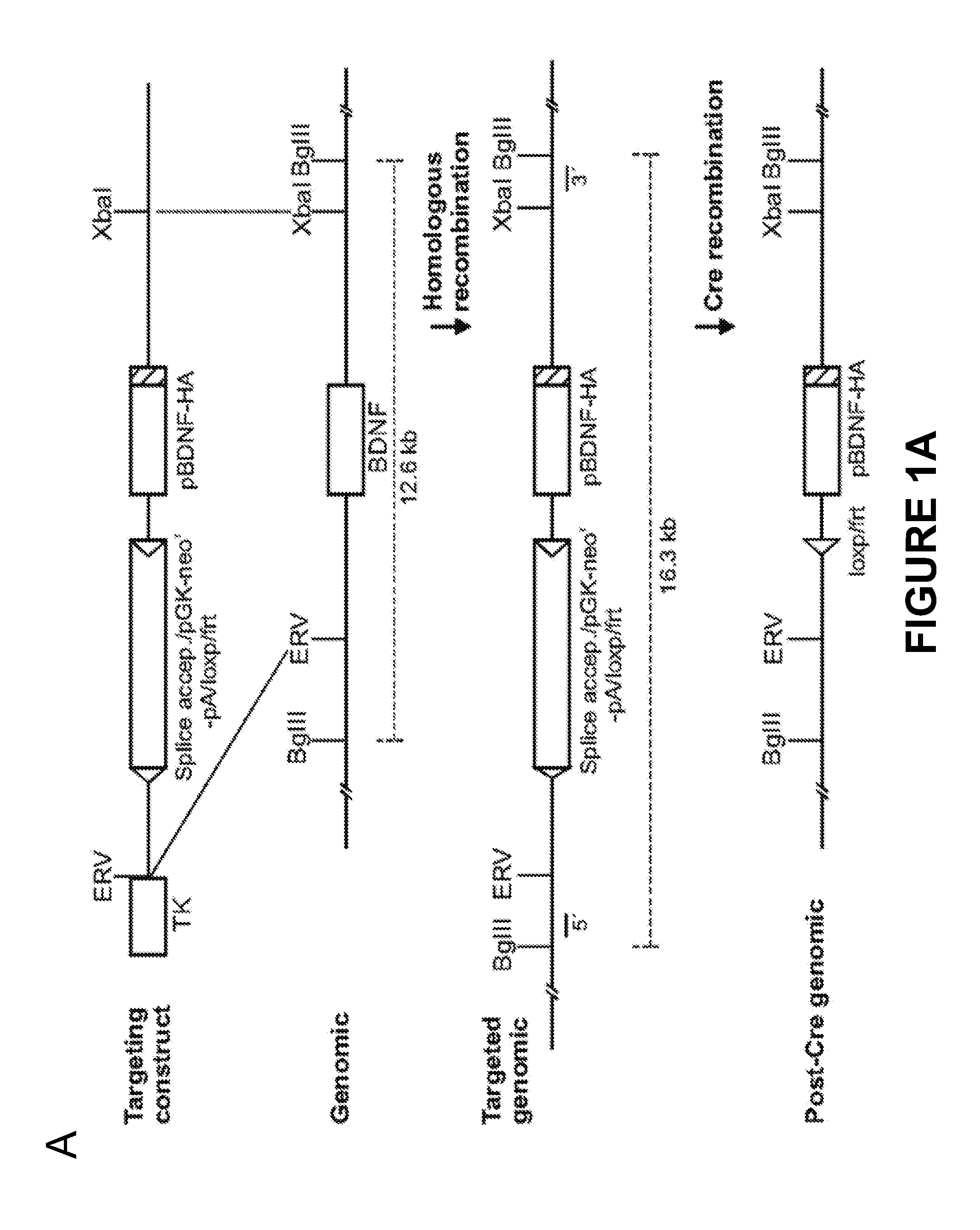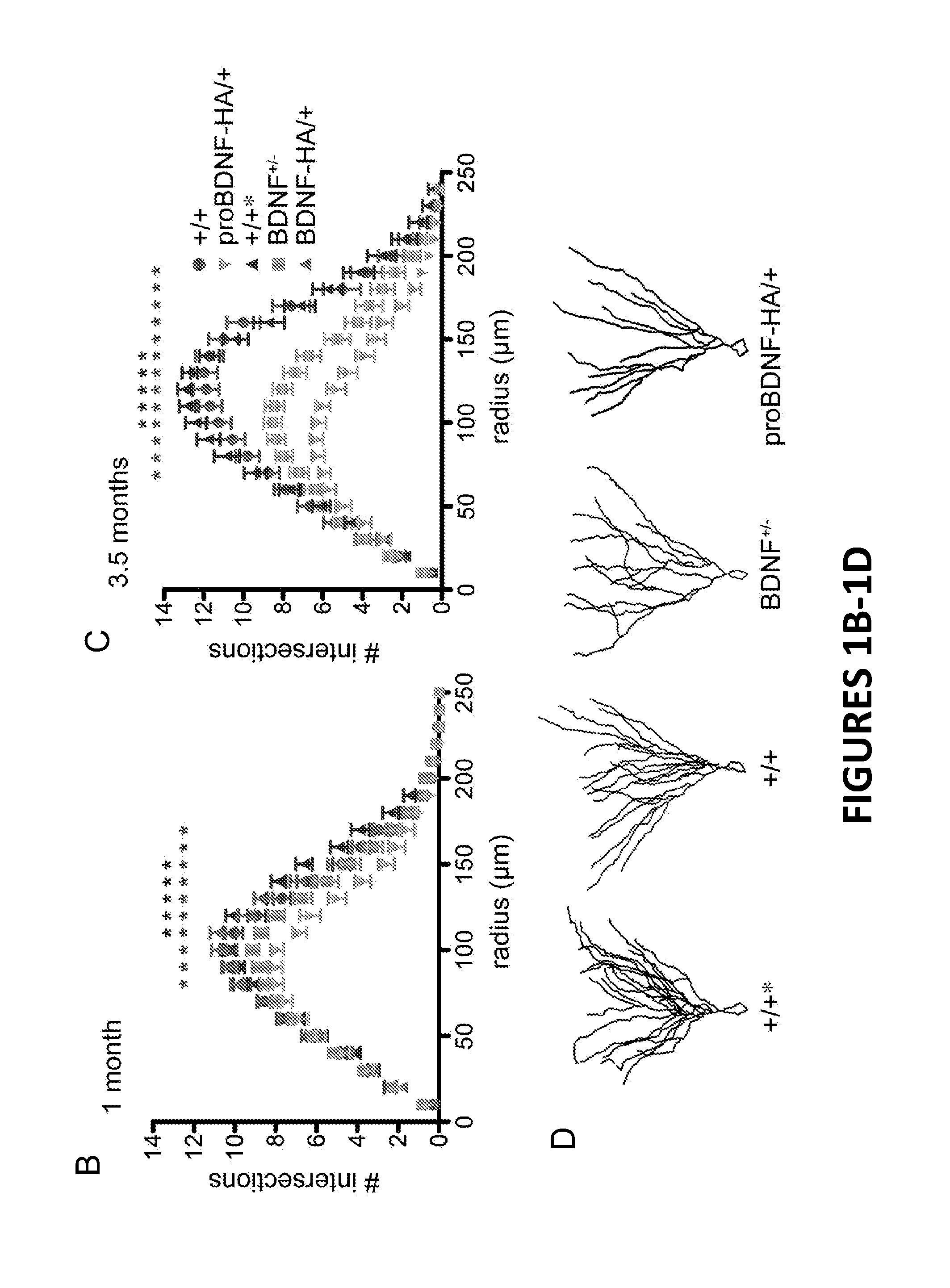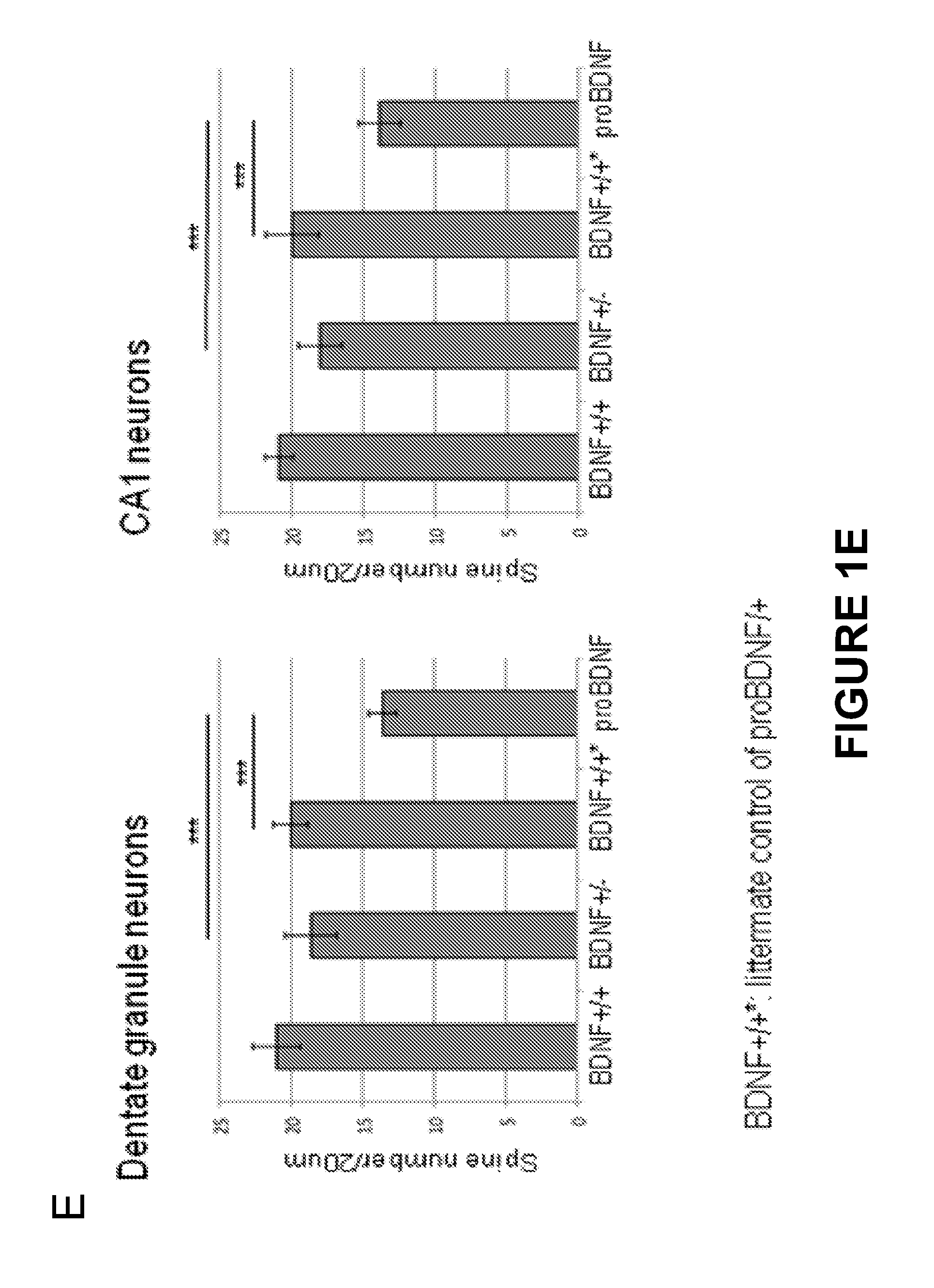Methods for treating early stage or mild neurological disorders
a neurological disorder and early stage technology, applied in the field of early stage or mild neurological disorders, can solve the problem that the molecular mechanism downstream of pronts that underlies differential outcomes is still poorly characterized, and achieve the effect of reducing and/or preventing unwanted pronts in synaptic spines
- Summary
- Abstract
- Description
- Claims
- Application Information
AI Technical Summary
Benefits of technology
Problems solved by technology
Method used
Image
Examples
example 1
Experimental Procedures
[0072]Materials.
[0073]The LifeAct sequence (RIEDL, J. et al., Nat Methods 5:605-607 (2008)) was cloned into the pEGFP-N1 backbone (Clontech) using the BglII and BamHI restriction sites. Trio constructs were described previously (FERRARO, F. et al., Mol Biol Cell 18:4813-4825 (2007)), human sortilin cDNA or human SorCS2 cDNA was subcloned into the pcDNA3.1 hygro expression vector (Invitrogen). A Myc-tag was inserted three residues after the furin site using PCR. FascincDNA was kindly provided by Prof. Xin-Yun Huang (CHEN, L. et al., Nature 464:1062-1066 (2010)) and was subcloned into pcDNA 3.1 using the BamHI and EcoRI sites. Following primary antibodies were used: anti-actin and anti-HA (Sigma), anti-fascin and anti-Rac1 (Millipore), anti-p75NTR (9651 (HUBER, L. J. et al., Dev Biol 167:227-238 (1995)); and R&D Systems), anti-sortilin and anti-SorCS2 (R&D Systems), anti-Trio (Santa Cruz C20; and CT-35 (MCPHERSON, C. E. et al., Gene 284:41-51 (2002)), anti-Myc a...
example 2
Generation of proBDNF-Expressing Mice
[0102]To evaluate the effects of proBDNF expression in vivo, the inventors generated a probdnf knock-in mouse, replacing one bdnf allele with probdnf with a mutated furin cleavage site, but leaving one endogenous allele intact to maintain viability (FIG. 1A). A C-terminal HA epitope tag was added to facilitate detection of the introduced allele (probdnf-HA). This approach was advantageous, since a substitution of both endogenous bdnf alleles with a cleavage-resistant probdnf would likely result in a lethal perinatal phenotype, as mature BDNF is required for vascular development (DONOVAN, M. J. et al., Development 127:4531-4540 (2000)). In addition, a probdnf transgene would fail to recapitulate the complex transcriptional and translational regulation of the bdnf locus (GREENBERG, M. E. et al., Journal of Neuroscience 29:12764-12767 (2009)). Because probdnf-HA / + mice expressed only one endogenous bdnf allele, the inventors also analyzed animals ha...
PUM
| Property | Measurement | Unit |
|---|---|---|
| Interaction | aaaaa | aaaaa |
| Disorder | aaaaa | aaaaa |
| Ectodomain | aaaaa | aaaaa |
Abstract
Description
Claims
Application Information
 Login to View More
Login to View More - R&D
- Intellectual Property
- Life Sciences
- Materials
- Tech Scout
- Unparalleled Data Quality
- Higher Quality Content
- 60% Fewer Hallucinations
Browse by: Latest US Patents, China's latest patents, Technical Efficacy Thesaurus, Application Domain, Technology Topic, Popular Technical Reports.
© 2025 PatSnap. All rights reserved.Legal|Privacy policy|Modern Slavery Act Transparency Statement|Sitemap|About US| Contact US: help@patsnap.com



